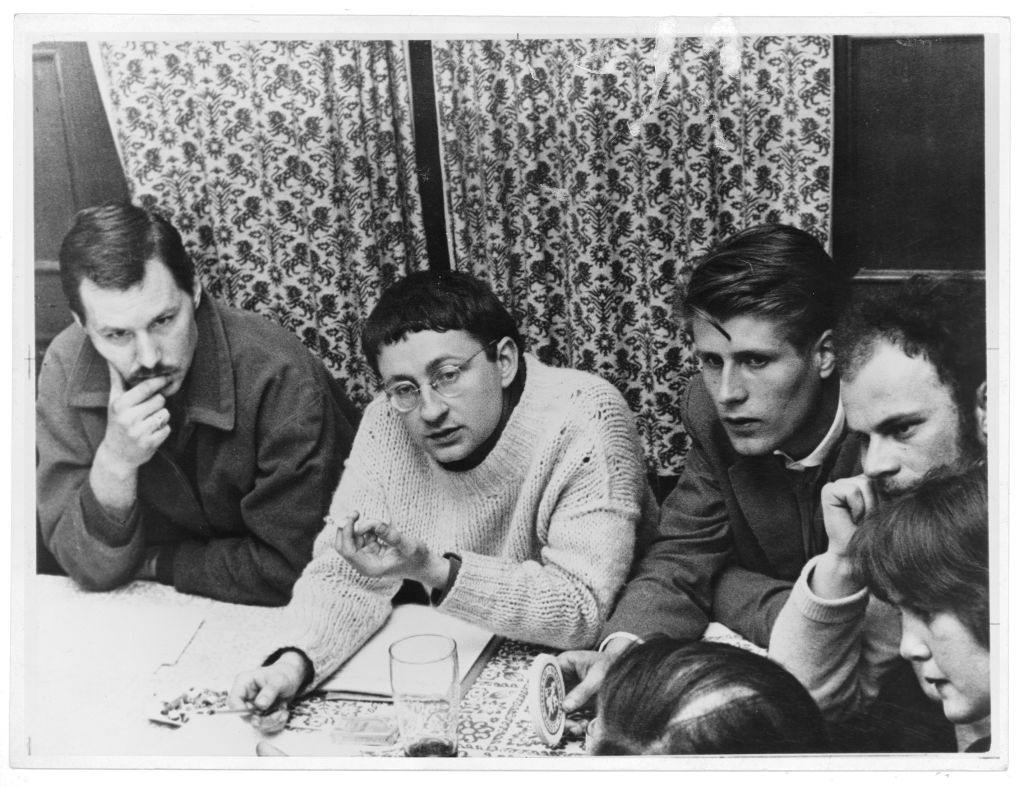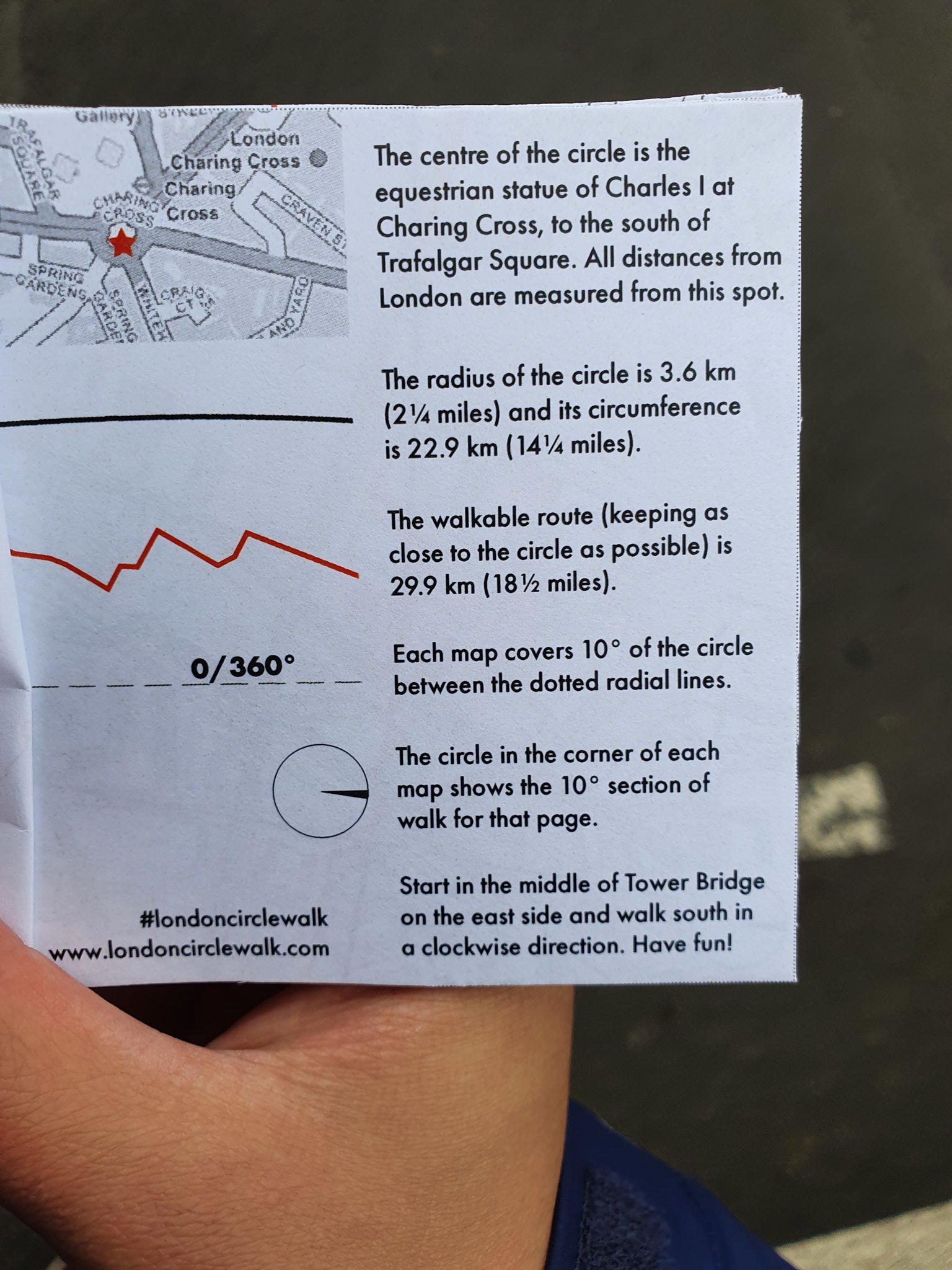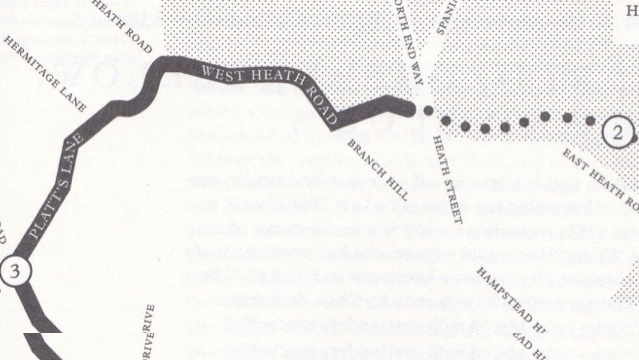To learn psychogeography, take a strange, circular walk around London

- On September 10, join the London Circle Walk — a circular walk around London.
- Why? It’s a great example of the purposeful aimlessness that makes psychogeography fun.
- Starting and ending at Tower Bridge, the walk takes in a rich, random slice of London life.

Don’t look up “psychogeography.” Again and again, you’ll come across Guy Debord, the Marxist theorist who coined the term in 1955; the Situationist International, the avant-garde movement that attempted to popularize the concept; and obligatory jargon like flâneur, dérive and robinsonade.
Persist in your research, and you’ll fall down a rabbit hole of mid-century French social, political, and philosophical theory, from which it is safe to say no one escapes entirely unscathed. Rather, think of it simply as what the term itself promises: the crossroads of psychology and geography.
But don’t confuse it with geopsychology – another concept at the same crossroads, but on another corner, so to speak. Geopsychology studies robust, fixed links between landscape and personality, while psychogeography deals more with the fluidity of moods and impressions.
What on Earth is psychogeography?
Psychogeography explores how landscape affects mind, and how mind reflects landscape. That landscape is often the built-up environment of a city. The method of investigation is often, simply, a random walk.
Practice, not theory, is the best way to experience what psychogeography is about. The crucial bit is the “randomness” of your walk. It must be purposefully aimless. That’s a tricky balancing act, and there are few better examples of this than the upcoming London Circle Walk.
The London Circle Walk is a route that traces, as best as the city’s buildings and streets allow, a perfect circle around the center of the British capital. On September 10, Michael Brunström, co-creator of the Walk, will lead a group along its route, starting at 10 am from the middle of Tower Bridge.
“This is a challenging, whole-day adventure, as the route is over 20 miles,” he writes on the walk’s Facebook page. “Remember to bring appropriate footwear and waterproofs, and provisions to keep you going. We will stop for lunch somewhere in Kensington.”
Estimated to take around nine hours, the circular walk will end in the early evening where it began, at Tower Bridge. Like many of the world’s greatest (and silliest) ideas, the London Circle Walk was born in a pub.

“(Tim Wilson and I) were several pints into the conversation, and for reasons unknown we were discussing the work of land artist Richard Long, who took art into pioneering conceptual realms by calling a walk ‘art,’ and who is particularly noted for the circles and straight lines that he would trace over stretches of countryside, both in the UK and across the plains of Canada, Mongolia, and Bolivia,” writes Mr. Brunström.
“What would happen, we asked ourselves, if we were to apply a pair of compasses to a map of London? How much zigzagging would you be forced to do in order to walk as closely as possible to an imaginary circle on the ground? What would we find along the way?”
A curious cartographic artifact
And the rest, as they say, is psychogeographic history. The London Circle was born. It’s a curious cartographic artifact, mixing randomness with predetermination. It is centered on the equestrian statue of Charles I, who sits on a traffic island south of Trafalgar Square.
Dwarfed by Nelson’s Column, the king’s bronze likeness is easily overlooked. Yet the monument does occupy a momentous position. Several roads radiate from this point, including three of major significance: the Mall (toward Buckingham Palace), the Strand (toward the City), and Whitehall (toward Parliament). This convergence of royal, commercial, and political power has long been considered the midpoint of London, and not just symbolically. A plaque on the location informs visitors that “mileages from London are measured from [this] site.”
The actual midpoint of Greater London is 0.9 miles (1.5 km) to the southeast, at Greet House on Frazier Street, near the Lambeth North tube station — at least according to this article — but as a sort-of-kind-of zero point, King Charles (or his horse’s behind) will do nicely, at least for purposes of psychogeography.

The circle’s radius, meanwhile, was chosen as the best fit with places to cross the Thames, namely, Tower Bridge in the east and Albert Bridge in the west. Since its “invention” many years ago, Michael and his fellow inventor Tim have walked the route many times, agreeing that, for reasons both aesthetic and practical, clockwise is the best direction, and Tower Bridge the ideal point to start and end the circumambulation.
“It is fascinating to observe what happens when an abstract geometrical shape is superimposed on an urban landscape”, says Mr Brunström. ”(Y)ou are forced to think about cities in a different way, following a route that no one would normally take. As a walker, you are both bound by the constraints of the route (no deviation from the circle is permitted!) and liberated from those all-too-beaten paths that others have made.”
A route with an almost “ritual quality”
“The route almost takes on a ritual quality. You cannot help but become aware of time and space, observing the linear passage of the sun across the sky as you yourself perform a symbolic tour of a cyclical universe encoded in microcosm.”
The London Circle Walk samples a wide range of London’s varied neighborhoods, including but not limited to: the Old Kent Road, New Covent Garden at Nine Elms, the Peace Pagoda in Battersea Park, Queen’s Gate at Kensington Gardens, Paddington Station, the Marylebone Flyover, Regent’s Canal, London Central Mosque, the heart of Camden Town, and Petticoat Lane.
London Circle Walkers pass by some of the poorest areas of London, as well as some of its richest. The walk also includes “a bus garage, a museum, a university, a giraffe enclosure, a hospital, a high-security police station, and a theatre… It is made up of concrete, water, grass, brick glass, tree, steel, and earth. It passes at least 50 pubs. And below street level lie generations of souls amid fields, streets, and houses that have long vanished from view, not to mention an even more ancient geology and hydrology.”
The route keeps as close as possible to the perfect roundness of its ideal shape, which means it “runs tantalizingly close to major well-known monuments, which it blithely ignores.”
In some places, shortcuts are possible. They get walkers closer to the geometric circle, but “all (these shortcuts) involve a degree of daring and/or illegality: hire a boat to take you across Battersea Park boating lake; bribe a security guard to let you out the fire exit at the back of the Natural History Museum; bring a ladder to break into London Zoo. A team of parkour enthusiasts could knock miles off the total distance.”
It’s unclear whether that would still be in keeping with the tenets of psychogeography as defined by Debord and practiced by the Situationists. But it does sound like a lot more fun than one of their meetings.

Strange Maps #1164
Got a strange map? Let me know at [email protected].
Follow Strange Maps on Twitter and Facebook.





